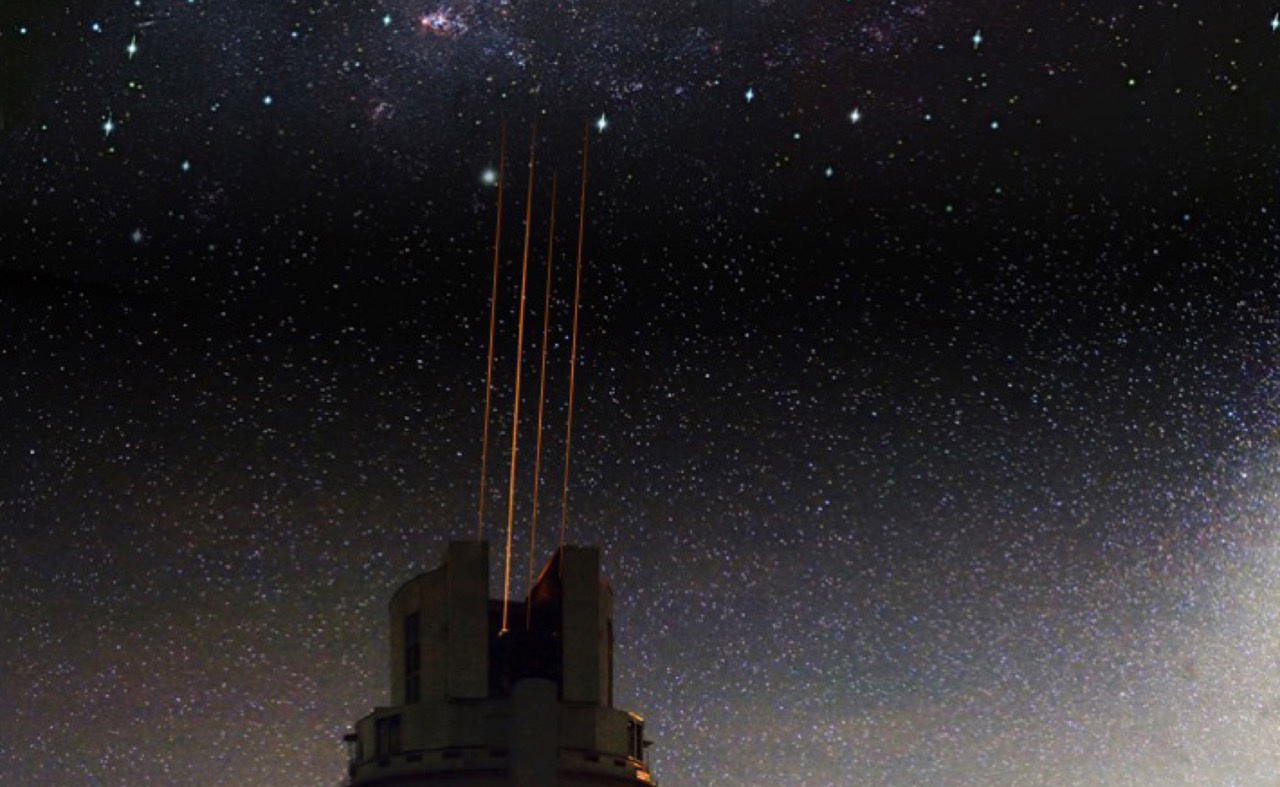The Subaru Ground Layer Adaptive Optics (GLAO) Project
About the Subaru Ground Layer Adaptive Optics (GLAO) Project
We aim to carry out an extensive upgrade of the Subaru Telescope to keep the telescope on the cutting edge of astronomy. By compensating for the blurring effect of the atmosphere across wide areas of the sky in real time, GLAO will allow us to conduct observations with unprecedented depth and field of view, and with an image sharpness comparable to the Hubble Space Telescope. Unlike conventional adaptive optics, which provide diffraction limited images over only a narrow field of view, this new wide-field adaptive optics system will measure and correct the effects of atmospheric turbulence using multiple laser guide stars and wavefront sensors. As part of the upgrade process, a deformable secondary mirror is to be installed on the Subaru Telescope. It will provide a sharp field of view of up to 20 arcminutes in diameter and, in infrared observations, an image scale of about 0.2 arcseconds.

By directing four laser beams into the sky and making the upper atmosphere glow, wide-field adaptive optics create artificial stars (laser guide stars), which enable us to measure and compensate for the blurring by Earth’s atmosphere.